Rescuers yesterday searched for people feared missing in floods and landslides that have killed at least 58 in India, including nine who died in the collapse of a popular temple.
Days of torrential downpours have washed away vehicles, demolished buildings and destroyed bridges in the Himalayas.
Flooding and landslides are common and cause widespread devastation during India’s treacherous monsoon season, but experts say climate change is increasing their frequency and severity.
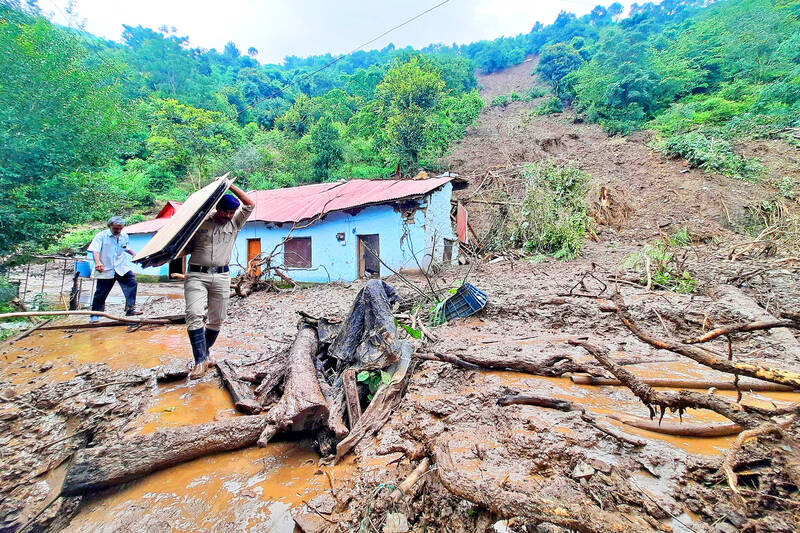
Photo: AFP
Fifty people have been killed in Himachal Pradesh since Sunday, with thousands more stranded after disruptions to roads, power lines and communication networks.
“As many personnel as possible are being deployed in relief and rescue work,” Himachal Pradesh Chief Minister Sukhvinder Singh Sukhu said in a statement late on Monday. “Work will continue on a war-footing to provide relief to the people.”
Sukhu said earlier that up to 20 others were feared trapped under rubble after landslides, and appealed to residents to stay indoors and avoid going near rivers.
Images from hard-hit areas in Himachal Pradesh showed bodies being pulled out of piles of dark earth that had crushed buildings and smashed roofs.
Railway lines were seen dangling in midair, the ground beneath them washed away.
At least nine people died when a landslide triggered the collapse of a Hindu temple in the state capital, Shimla, with officials fearing more were trapped underneath the rubble.
Sukhu said that the state would scale down yesterday’s annual celebrations of Independence Day, which marks the end of the British colonial era, to concentrate on rescue efforts.
Indian Prime Minister Narendra Modi, speaking from the Red Fort in New Delhi for his annual holiday address, said that natural disasters had caused “unimaginable troubles” for families across the nation.
“I express my sympathies towards all of them, and I assure them that state and central governments will work together,” he told the crowd.
At least eight more people have also been killed since Friday last week in neighboring Uttarakhand state.
Rescue teams there raced to remove debris after people were feared buried when heavy rainfall triggered landslides.
Five people were buried when a landslide hit a resort near the popular yoga retreat of Rishikesh on the banks of the River Ganges.
Several riverside towns and villages in both states were at risk of flash floods from the heavy rain forecast in the region.
The monsoon brings South Asia about 80 percent of its annual rainfall, and is vital for both agriculture and the livelihoods of millions, but it also brings destruction every year in the form of landslides and floods.
Days of relentless monsoon rains killed at least 90 people last month, while the capital, New Delhi, saw the Yamuna River — which snakes past the megacity — record its highest levels since 1978.
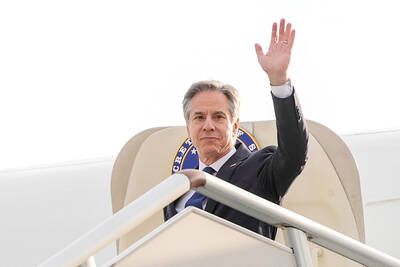
‘IN A DIFFERENT PLACE’: The envoy first visited Shanghai, where he attended a Chinese basketball playoff match, and is to meet top officials in Beijing tomorrow US Secretary of State Antony Blinken yesterday arrived in China on his second visit in a year as the US ramps up pressure on its rival over its support for Russia while also seeking to manage tensions with Beijing. The US diplomat tomorrow is to meet China’s top brass in Beijing, where he is also expected to plead for restraint as Taiwan inaugurates president-elect William Lai (賴清德), and to raise US concerns on Chinese trade practices. However, Blinken is also seeking to stabilize ties, with tensions between the world’s two largest economies easing since his previous visit in June last year. At the
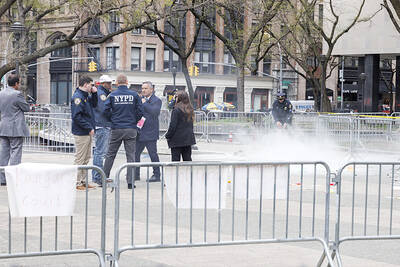
UNSETTLING IMAGES: The scene took place in front of TV crews covering the Trump trial, with a CNN anchor calling it an ‘emotional and unbelievably disturbing moment’ A man who doused himself in an accelerant and set himself on fire outside the courthouse where former US president Donald Trump is on trial has died, police said yesterday. The New York City Police Department (NYPD) said the man was declared dead by staff at an area hospital. The man was in Collect Pond Park at about 1:30pm on Friday when he took out pamphlets espousing conspiracy theories, tossed them around, then doused himself in an accelerant and set himself on fire, officials and witnesses said. A large number of police officers were nearby when it happened. Some officers and bystanders rushed
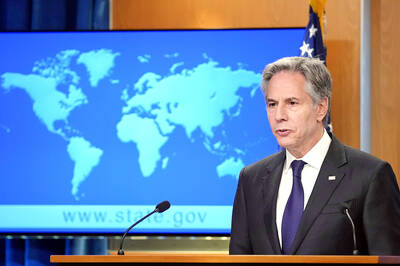
Beijing is continuing to commit genocide and crimes against humanity against Uyghurs and other Muslim minorities in its western Xinjiang province, U.S. Secretary of State Antony Blinken said in a report published on Monday, ahead of his planned visit to China this week. The State Department’s annual human rights report, which documents abuses recorded all over the world during the previous calendar year, repeated language from previous years on the treatment of Muslims in Xinjiang, but the publication raises the issue ahead of delicate talks, including on the war in Ukraine and global trade, between the top U.S. diplomat and Chinese
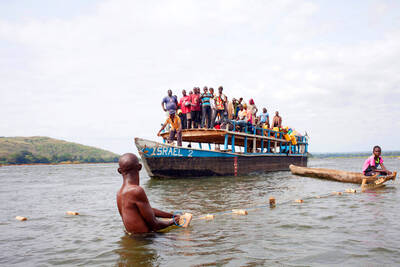
RIVER TRAGEDY: Local fishers and residents helped rescue people after the vessel capsized, while motorbike taxis evacuated some of the injured At least 58 people going to a funeral died after their overloaded river boat capsized in the Central African Republic’s (CAR) capital, Bangui, the head of civil protection said on Saturday. “We were able to extract 58 lifeless bodies,” Thomas Djimasse told Radio Guira. “We don’t know the total number of people who are underwater. According to witnesses and videos on social media, the wooden boat was carrying more than 300 people — some standing and others perched on wooden structures — when it sank on the Mpoko River on Friday. The vessel was heading to the funeral of a village chief in